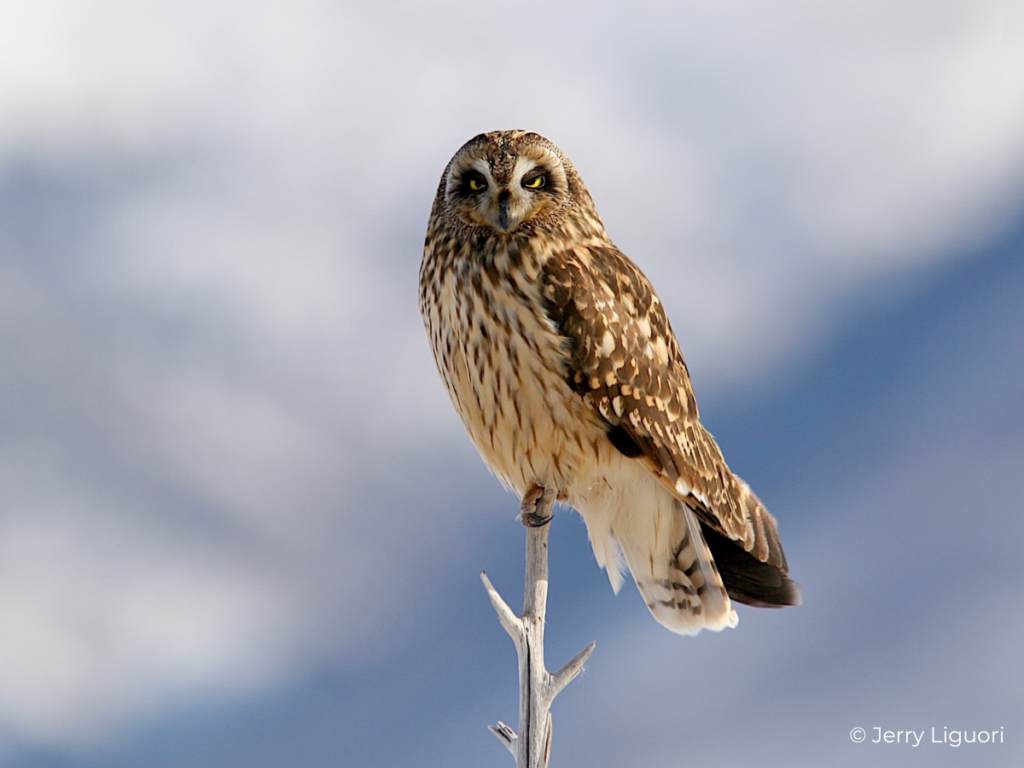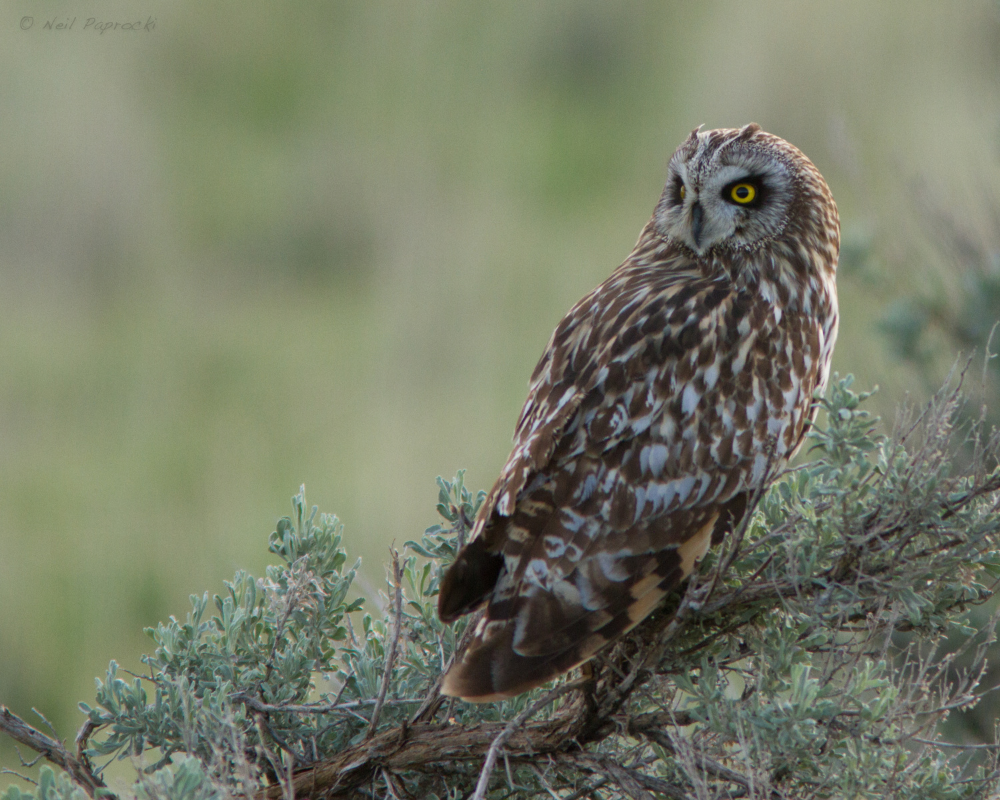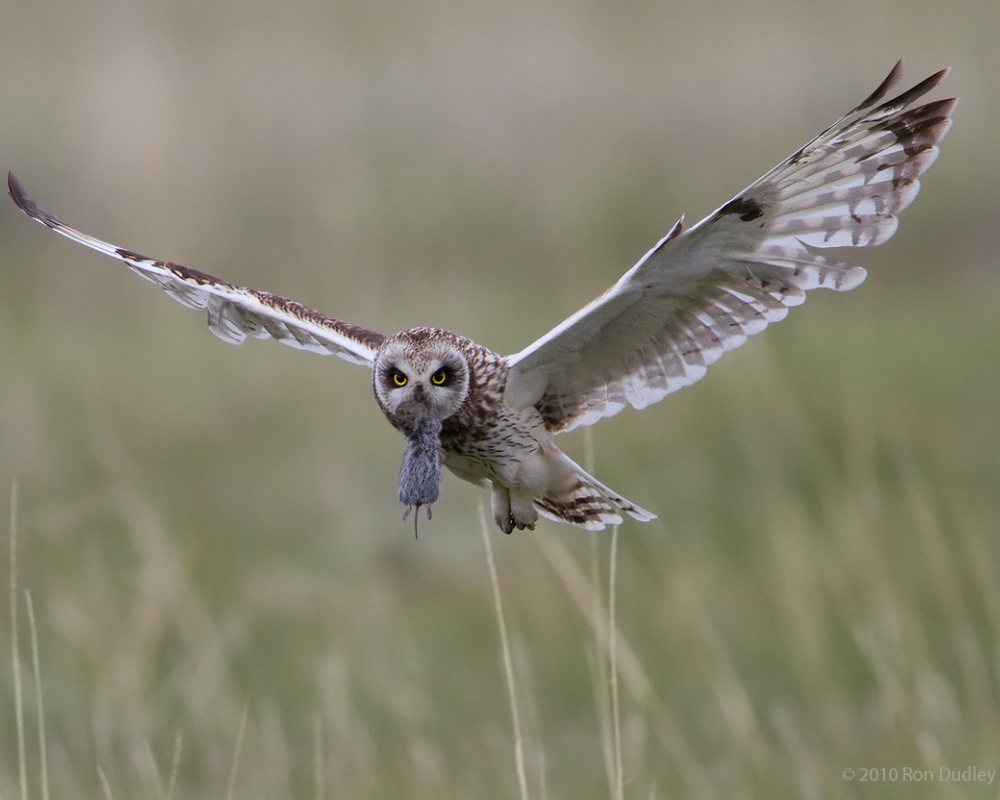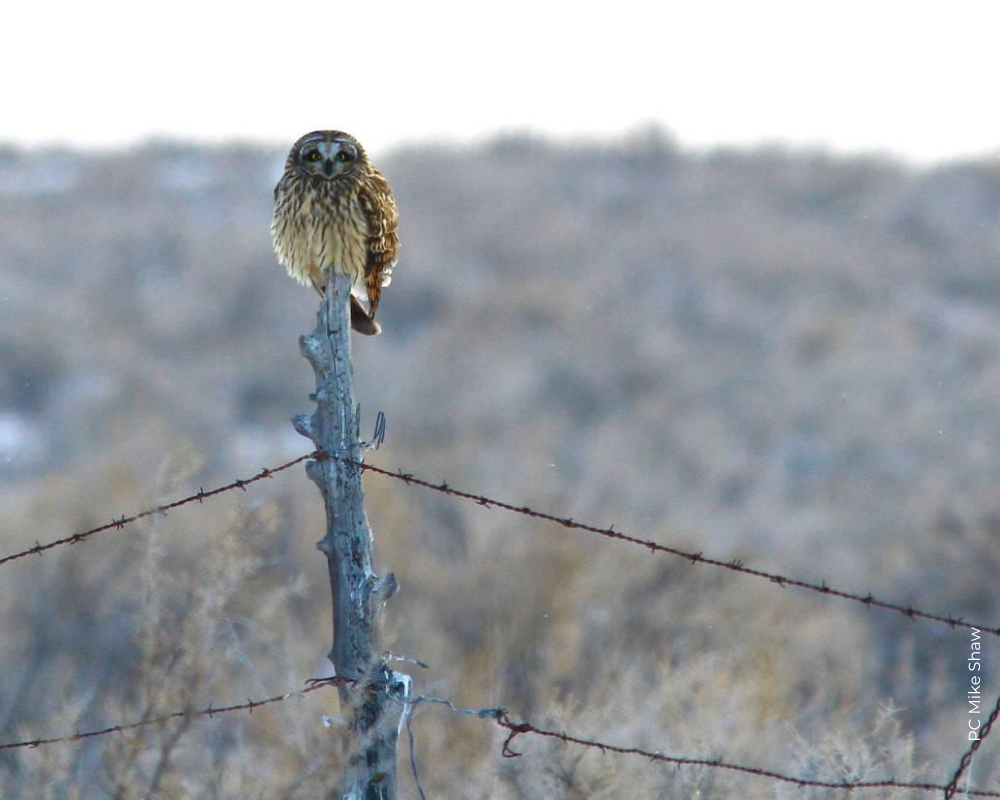Overview
The Short-eared Owl is a medium-sized owl that is active during the day and at night. They are similar in appearance to Long-eared Owls (and about the same size) and the larger Great Horned Owl but occupy an entirely different habitat. Short-eared Owls are found in open marshes, grasslands, tundra, and sage deserts, often residing side-by-side with Northern Harriers. They even nest on the ground like Harriers. Their main prey is mice and voles, which they swallow whole, but they do catch some small birds from time to time. They hunt low to ground, listening and looking for prey, and pounce with great speed and agility when they hear or spot a prey item. Once securing prey, they swallow it quickly or tuck it close to their body as they fly off to a secluded spot, always on the lookout for other raptors that may want to steal their food. Short-eared Owls are widespread and fairly common throughout their range (see map). When mating, they make a series of low owl-like hoots. When agitated or in flight, they make a sharp raspy barking call or drawn-out raspy call. Fledgling Short-eared Owls beg in a raspy tone or chatter in a quick, raspy series.




